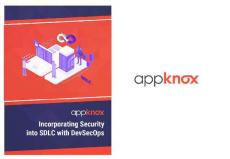Manufacturing Has the Lowest Percentage of High-Severity Flaws but Needs to Improve Time to Remediation
The past 12 months have been especially challenging for the manufacturing industry. The pandemic affected in-person manufacturing jobs as well as supply and demand, causing many manufacturing companies to shut their doors or lay off valuable employees. Recognizing the vulnerable state of manufacturing companies, cybercriminals saw manufacturing as an easy target. In fact, the manufacturing industry saw an 11 percent increase in cyberattacks in 2020.








